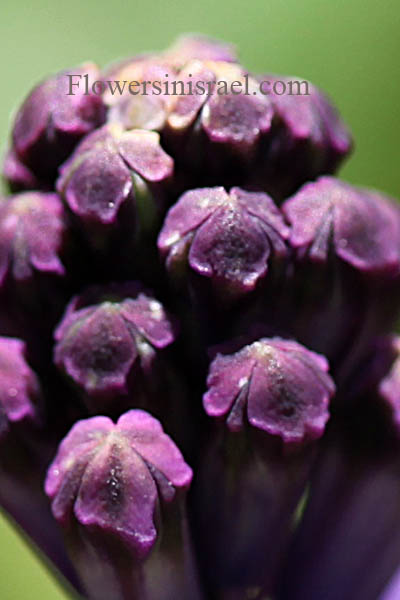Purple Roman squill, Turkish bellevalia,
Hebrew: זמזומית סגולה, Arabic: البلفية ثلاثية الوريقات
| Scientific name: | Bellevalia trifoliata (Ten) Kunth | |
| Synonym name: | Hyacinthus trifoliatus Ten. | |
| Common name: | Purple Roman squill, Turkish bellevalia | |
| Hebrew name: | זמזומית סגולה | |
| Arabic name: | البلفية ثلاثية الوريقات | |
| Family: | Liliaceae, שושניים |

|
| Life form: | Geophyte | |
| Stems: | 12-23 cm high; pink, violet color of the stem and pedicels | |
| Leaves: | Rosette, simple, smooth | |
| Flowers: | Raceme; flower-buds purple-violet; erect but arch down slightly after opening when the petals brown greenish | |
| Fruits / pods: | Capsule, obtuse at apex; seeds rounded or occasionally pear-shaped, smooth, dull, black, but sometimes with a bluish bloom | |
| Flowering Period: | February, March | |
| Habitat: | Batha, Phrygana | |
| Distribution: | Mediterranean Woodlands and Shrublands | |
| Chorotype: | Mediterranean | |
| Summer shedding: | Ephemeral |

Derivation of the botanical name: Bellevalia, named in honor of Pierre Richer de Belleval (1564-1632), who founded the Montpellier Botanic Garden in 1593. trifoliata, tri, tres, three; foliatus, provided with or having leaves; 3 leaved. The Hebrew name: זמזומית, zimzumit, it's origin is in the buzzing, humming (זמזום, zimzum), that the flowers make when they are slightly crushed by hand.
|